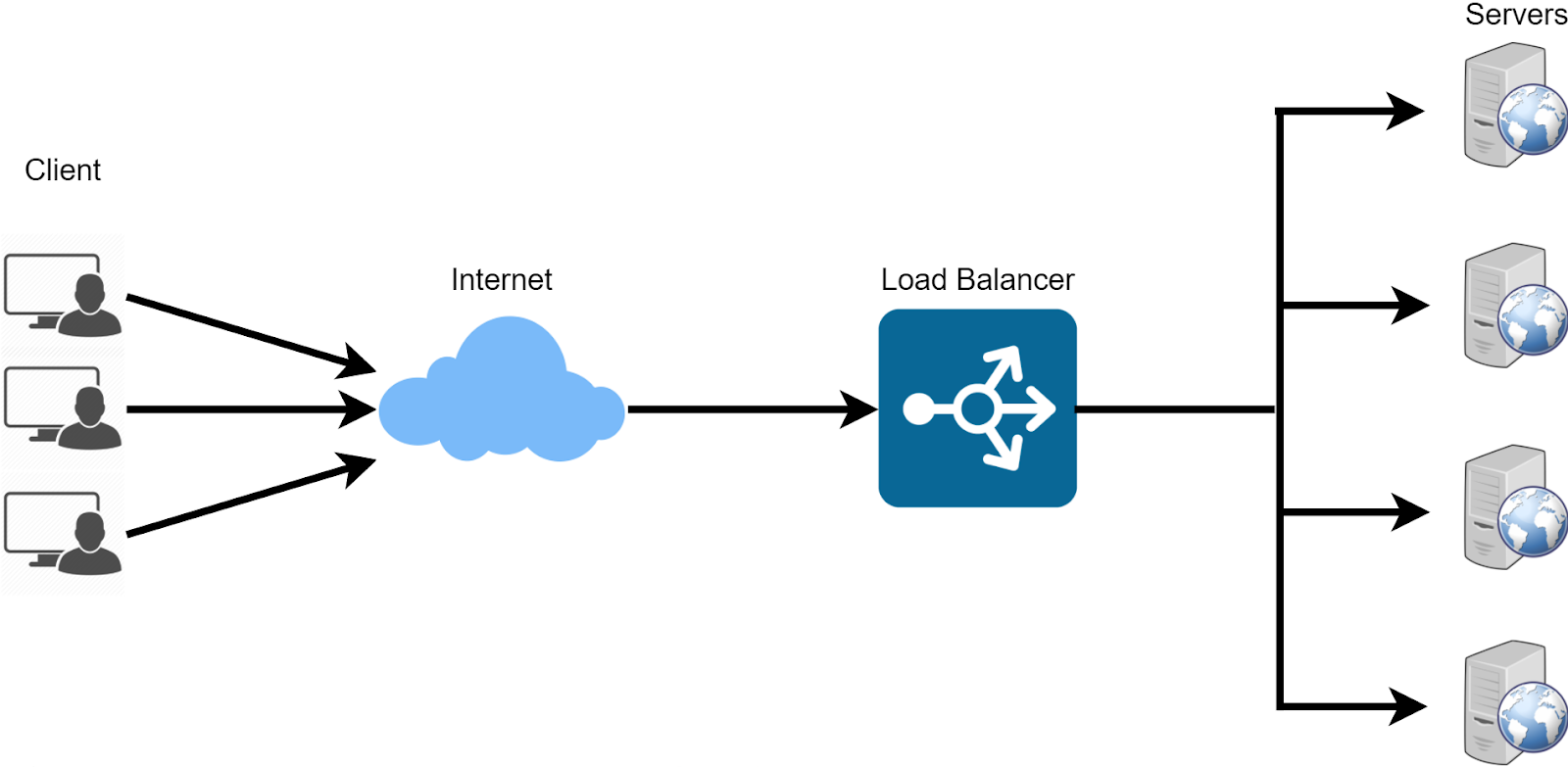Load Balancer

In the realm of system design, a load balancer plays a pivotal role in maintaining smooth and efficient operations. But what does a load balancer do? In simple terms, a load balancer is a device that operates as a reverse proxy, distributing network or application traffic across multiple servers.
The fundamental functions of a load balancer involve distributing client requests or network loads across multiple servers, ensuring high availability and reliability by directing requests only to servers that are operational, and providing the flexibility to add or remove servers based on demand.
Imagine walking into a popular, bustling restaurant on a Friday night. The host at the door is the load balancer of this culinary establishment. They quickly assess the floor, noting which tables are available and which waiters have their hands full. As guests arrive, the host seats them in a manner that ensures no single waiter is overwhelmed, guaranteeing a delightful dining experience for all. This is the essence of what a load balancer does in the digital realm—it ensures that network or application traffic is distributed across multiple servers, so no single server becomes a bottleneck.

Elements of a Load Balancer
Algorithms
Load balancer algorithms are the decision-making rules for how incoming network traffic should be distributed. There are several different types of algorithms, each with its own advantages and disadvantages.
- Round Robin: This is a simple method that distributes requests equally across all servers. This method works best when all servers have the same specifications and capacity.
- Least Connections: This method directs traffic to the server with the fewest active connections. This is helpful when servers have varying capabilities.
- IP Hash: This method uses the client's IP address to determine which server to send them to. This can be beneficial for maintaining user sessions.
Health checks
Health checks are a critical component of load balancing. They regularly check the status of servers to ensure they are responding to requests. If a server fails a health check, the load balancer will stop sending traffic to it until it passes a health check. These checks help maintain high availability and performance by ensuring only healthy servers receive traffic.
SSL Offload
SSL Offload is a feature that aids in managing the SSL handshake process and decryption of SSL traffic, which can be CPU-intensive tasks. By offloading these tasks to the load balancer, backend servers can dedicate more resources to processing requests, which can enhance overall system performance.
Session Persistence
Session persistence, also known as sticky sessions, is a feature that connects a client's session to a specific server. This is crucial for applications where users need to stay connected to the same server throughout their session, such as in e-commerce sites where shopping carts are stored on the server.
Reverse Proxy
A reverse proxy is a server that sits between client devices and web servers, forwarding client requests to web servers and returning server responses back to clients. In load balancing, the reverse proxy function allows the load balancer to distribute client requests across multiple servers, making it appear to the client as if all responses are coming from a single server. This helps improve performance, enhances security, and allows for better control over traffic flow.
Considerations for Load Balancer Design
- Scalability: This is a crucial consideration when designing a load balancing solution. The solution should be capable of handling increased traffic without performance degradation.
- Redundancy and Fault Tolerance: Redundancy and fault tolerance are also key factors in load balancer design. Multiple load balancers can be used together to ensure uninterrupted service if one fails.
- Security: Security is another important aspect in load balancer design. Features like SSL offloading can help safeguard sensitive data while it's being transferred.
- Performance and Efficiency: Performance and efficiency are critical considerations in load balancer design. Striking the right balance between these factors can ensure that your system remains responsive even under heavy loads.
Some use case scenarios
- In web applications, load balancers are used to distribute traffic to different web servers, ensuring that no single server is overwhelmed and that web pages load quickly for users.
- In cloud computing, load balancers are used to distribute workloads across multiple computing resources, such as virtual machines or containers.
- E-commerce platforms often use load balancers to ensure that their websites remain operational during peak traffic periods, like during holiday shopping seasons.
- In data centers, load balancers are used to distribute network traffic across a large number of servers to ensure that no single server becomes a bottleneck.